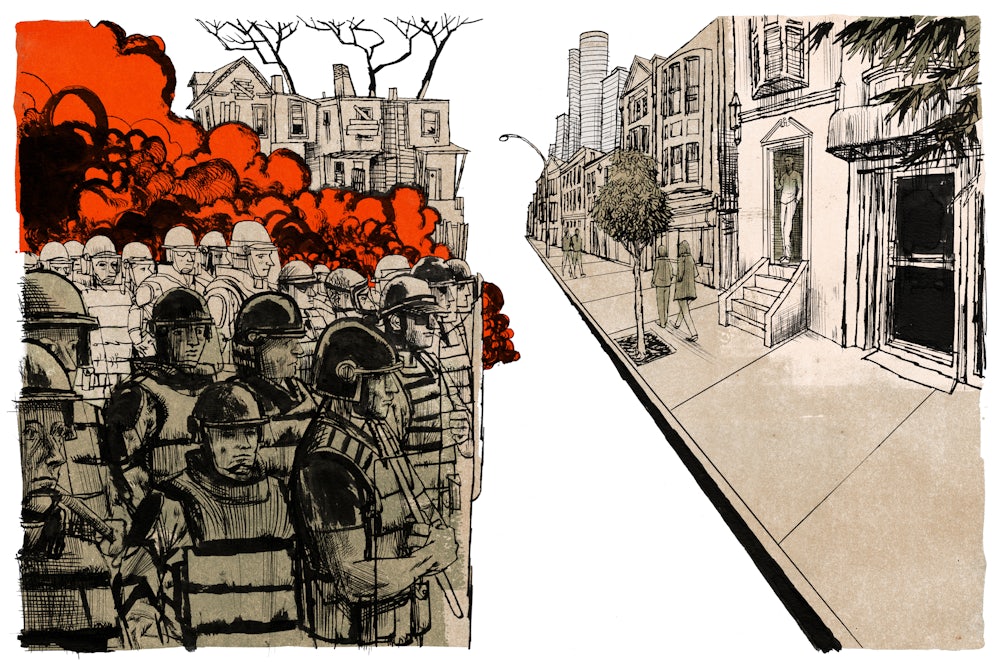In 2016, the killing of Laquan McDonald brought reform prosecutor Kim Foxx into office in Chicago. Larry Krasner, a criminal defense attorney who had sued the Philadelphia Police Department 75 times over the course of his career, scored an improbable victory in his run for district attorney the following year. In 2019, Wesley Bell became St. Louis County’s first Black prosecutor, five years after the police killing of Michael Brown and the protests that erupted in nearby Ferguson. And in January 2020, the city of San Francisco swore in a charismatic young district attorney, Chesa Boudin, whose fame rested partly on being the son of 1960s radicals incarcerated for armed robbery and felony murder.
One of the unlikeliest trends of the Trump years was the rise of the prosecutor as a crusading criminal justice reformer. From Boston to the Bay Area, “top cops” won popular elections on a pledge to overturn decades of tough-on-crime policies. They promised to hold police who had violated the civil rights of criminal suspects accountable, and to address racial disparities in sentencing. They set out to reduce incarceration by ending cash bail, and to stop prosecuting many minor drug offenses and misdemeanors. Some, such as Boudin, were elected by exceedingly narrow margins; others, like Krasner, overcame candidates preferred by Democratic insiders and fierce opposition from powerful police unions.
The rise of these prosecutors poses one of the key political questions of our time: Can social movements change public mores, alter establishment preferences, and institutionalize policies that can diminish, if not roll back, expansive police powers? The death of George Floyd under the knee of a Minneapolis police officer in May 2020 affirmed the urgency of the changes district attorneys had been implementing around the country. The Floyd rebellion, as many called it, not only vindicated calls for criminal justice reform, but radicalized them, with demands to defund, disarm, even abolish the police.
Swing district Democrats and sober political scientists warned that the protests, especially those that turned to rioting, looting, and the torching of a police precinct in Minneapolis, would yield renewed calls for law and order. The Trump presidential campaign counted on it. Even Barack Obama warned those calling to defund the police that their “snappy slogan” would turn people off. Some of these questions are still being litigated, but the initial verdict was clear. The Minneapolis City Council voted to abolish its police department. America’s biggest corporations, eager to be on the right side of history, signed every imaginable racial justice pledge, even as protesters smashed store windows from SoHo to Beverly Hills. Never demure about getting tough, New York Governor Andrew Cuomo was plaintive after weeks of street gatherings led to a push for criminal justice reform in Albany: “You don’t need to protest. You won.”
There’s a saying attributed to Lenin, “There are decades where nothing happens; and there are weeks where decades happen.” Or perhaps, the appearance of dramatic change obscures how the establishment is regrouping. Facing public and local business opposition in Minneapolis, the City Council beat a retreat from its most expansive promise of police abolition. Less than a year after Floyd’s death, miles from the courthouse where Derrick Chauvin, the police officer charged with his murder, was being tried, another Black man, Daunte Wright, was stopped for a minor motor vehicle violation and killed by police. Police kill approximately 1,000 people in the United States each year; during the Chauvin trial alone, they killed at least one person a day. Until recently, the public had scrutinized few of these killings. Protected by qualified immunity, only a handful of officers have been convicted of wrongful death. Despite 26 years on the force, the officer who killed Wright claims to have accidentally pulled her gun intending to use a taser.
Meanwhile, in Philadelphia, the police union has unsuccessfully sued its old foe, Larry Krasner, for publishing a police misconduct disclosure database. They are now backing his opponent, Carlos Vega, a career prosecutor whom Krasner fired from the district attorney’s office, in the primary. Philadelphia’s Democratic Party has also declined to endorse Krasner. In San Francisco, Chesa Boudin is facing a well-financed recall campaign spearheaded by some of San Francisco’s tech billionaires. One of the biggest donors to the campaign, former PayPal executive David Sacks, has taken aim at Boudin for supporting a “radical decarceration agenda that is making San Francisco and California less safe.”
In volatile times like these, trend lines are not secure. As unemployment, homelessness, and homicide have spiked during the pandemic, the traditional enemies of reform clearly see an opening. The homicide rate across major metropolitan areas rose 30 percent between 2019 and 2020. But as law and economics scholar John Pfaff has shown, the increase was consistent across 69 major municipalities, regardless of whether the county had a progressive district attorney. (In fact, the homicide rate in San Francisco is now lower than it was in 2017.) In short, there is no evident correlation between the recent rise in violent crime and criminal justice reform. But the battle over public perception is just beginning. Even though reformers have scored genuine victories over the past several years, getting tough is itching for a comeback. This will be one of the most consequential political battles of the coming period.
We often hear of the more than two million people in prison in the United States. But we hear less about the staggering 74 million who now have a criminal arrest record. That statistic is the direct result of a system of criminal punishment that metastasized and became part and parcel of a more broadly unequal and coercive society by the late 1970s. At the time, Irving Kristol wrote that liberals, “mugged by reality,” were moving to the right on national security and law and order issues. That same year, 1979, newly appointed Federal Reserve Chair Paul Volcker decreed that the standard of living of the average American needed to fall, and set himself the task of restoring fiscal discipline. Many date the origins of the neoliberal era to these two shifts in perception and public policy. But few see how entwined they really were. For bond vigilantes whose power stemmed from Volcker’s attack on inflation, imposing municipal austerity was inseparable from unleashing police power to tame rising crime.
Political careers and fortunes were made from the new dispensation. Men like Rudy Giuliani and Jeff Sessions launched successful political careers by stoking fears of criminal predation, often with rhetoric that had strong racial overtones (and even as crime rates fell). Despite austerity in public financing, as the prison scholar Ruth Wilson Gilmore has shown, bond investors found new opportunities to earn a good rate of return: Prison construction boomed.
Law professor Jonathan Simon characterizes the turn to law and order politics as “governing through crime.” A society in which the government claims to do less and less to promote health, education, and social welfare simultaneously outsources more and more authority to the police. By the 1990s, the government that ended welfare as we knew it under Bill Clinton and argued that progress in most spheres of social life was best left to the marketplace had already built the world’s largest carceral state and would soon embark on a long period of prosecuting expensive and futile wars that are only now winding down.
The financial crash of 2008 opened the first major cracks in the settlement that fused austerity and punishment as hallmarks of good government. Barack Obama’s administration was mostly a case of “old wine in new bottles”: more responsive government, softer austerity, reformed policing, smarter war. The opening, nevertheless, was real, and it yielded much sharper expressions of political reaction and insurgency. From the Tea Party to Occupy Wall Street to the Black Lives Matter uprisings in Ferguson and Baltimore, organizers sought to chart a future beyond neoliberalism.
The elections of Krasner, Boudin, Bell, Foxx, Rachael Rollins in Suffolk County, Massachusetts, and many others demonstrated the strength of the reformers. In the broadest sense, the rise of these DAs is just one piece of a larger challenge to think about how to stop governing through crime and change the course of a society that increasingly feels as if it is at war with its own. In a practical way, this mission coincides with the call to “defund the police,” a demand that is distorted when it’s disconnected from the call to change misguided policies by refunding nonpolice, civilian efforts to respond to health crises, homelessness, domestic disturbances, and school safety concerns, as many cities are now doing.
At the same time, just as economists are closely monitoring an expected rise in inflation from more liberal government spending and issuing warnings about an economy that might run too hot, those who have seen fit to govern our security over the past few decades are busy measuring spikes in crime and issuing stark warnings about reform gone too far. Under the challenging and adverse conditions in which we now live, in a time when policing and protest proceed on a hair trigger, it is not difficult to see how these two impulses—austerity economics and carceral control—could sync up again. We should see that they don’t.




